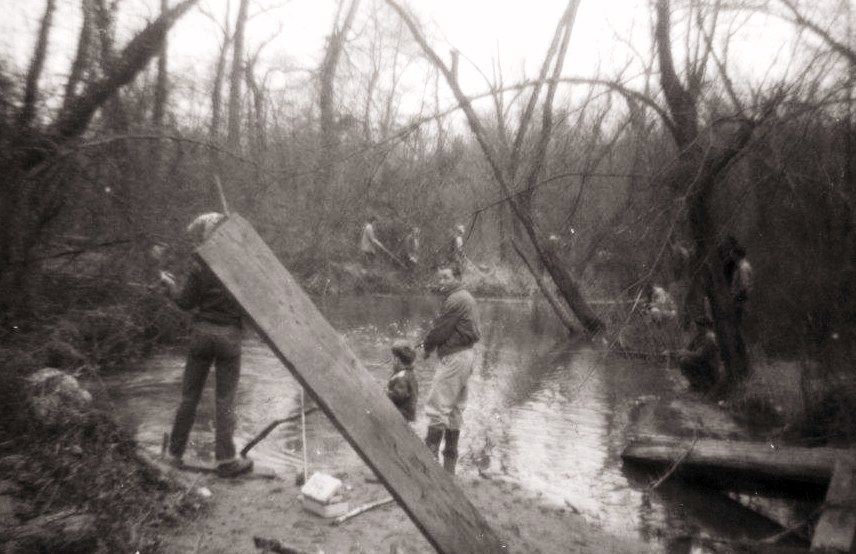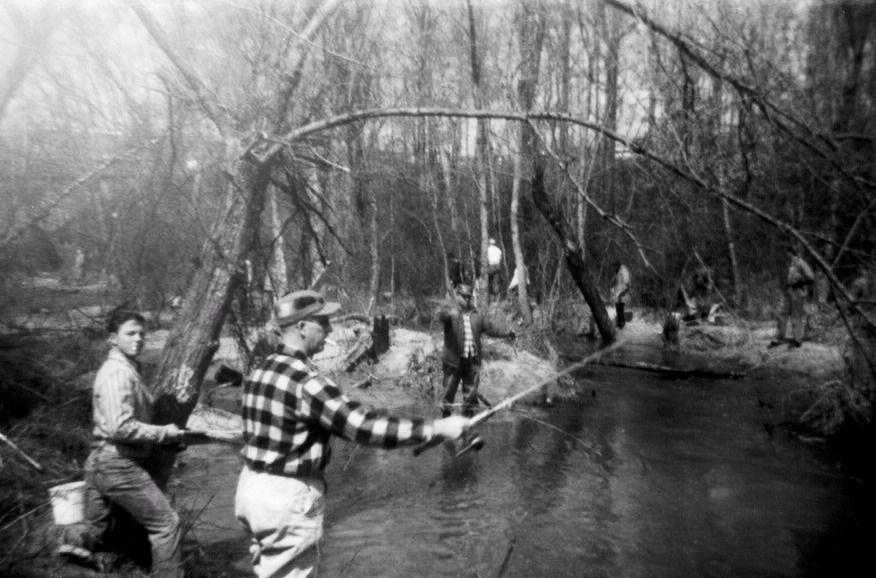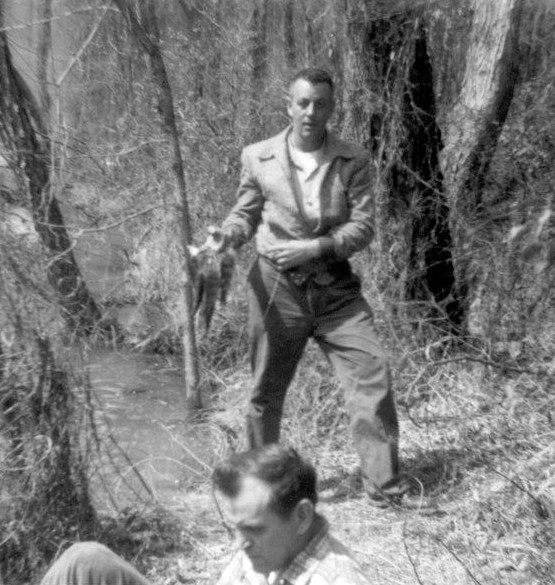Severn River Yellow Perch: A Fishery Lost to Development


Yellow perch fishing on Severn Run 3/23/1962
 Severn River's 43,500 acre watershed is located within Anne Arundel County in the developed Washington D.C. - Baltimore corridor. The Severn River's 12 miles of navigable water receives most of its freshwater input from Severn Run, although the river has at least 40 smaller tributaries and coves flanking it. The Severn River was once so productive that the state operated a yellow perch hatchery on the Severn River from the 1920s into the early 1960s that supplied larvae for stocking throughout Maryland. Impervious surfaces now occupy nearly 20% of its suburban watershed and, unfortunately, the Severn River has become a "worst case" example of development's impact on Maryland's tidal fisheries.
Severn River's 43,500 acre watershed is located within Anne Arundel County in the developed Washington D.C. - Baltimore corridor. The Severn River's 12 miles of navigable water receives most of its freshwater input from Severn Run, although the river has at least 40 smaller tributaries and coves flanking it. The Severn River was once so productive that the state operated a yellow perch hatchery on the Severn River from the 1920s into the early 1960s that supplied larvae for stocking throughout Maryland. Impervious surfaces now occupy nearly 20% of its suburban watershed and, unfortunately, the Severn River has become a "worst case" example of development's impact on Maryland's tidal fisheries.
Severn River supported a quality yellow perch recreational fishery into the 1970s. The upper Severn River estuary and Severn Run attracted many anglers seeking the first fishing opportunity of the year offered by the yellow perch run in late winter, but perch were caught throughout the year throughout the river as well. It ranked high in awards issued for large yellow perch, even though it was a small tributary. Concern about declining catches increased in the 1970s as impervious surfaces approached 10% of the watershed during the 1970s. The Severn River was closed to yellow perch harvest in 1989, as were other rivers, in response to overharvest and habitat deterioration. Problems in Severn River (and several other western shore tributaries) were attributed to unspecified poor habitat conditions due to increased development rather than overfishing. Impervious surfaces occupied about 15% of the Severn River's watershed in 1989.


Route 3 bridge and traffic from anglers fishing in Severn Run 3/23/1962
During 2001-2005, Fisheries Service combined fish monitoring, experimental stocking, and water quality monitoring to assess yellow perch habitat in the Severn River. Adult yellow perch did not exhibit excessive mortality or decreased growth, but hatching success of eggs was extremely low, as was larval relative abundance. Two significant habitat issues were identified that potentially impacted yellow perch eggs and larvae: salinity intrusion into the upper tidal spawning area and larval nurseries and poor summer dissolved oxygen (DO) throughout juvenile and adult habitat. Salinity levels in the historical spawning and nursery area were as high as levels found to be lethal in experiments. High salinities may have resulted as surface runoff replaced groundwater supplied flow; this change in water source is commonly accepted to occur as development occurs in a watershed. This disrupted flow created by development would also affect yellow perch egg chains spawned in the stream by washing them away in increased floods and burying them in increased sediment.
Low dissolved oxygen levels reduced the amount of habitat in summer, possibly denying perch refuge in deeper, cooler waters and affecting production of hormones needed for normal egg development. Other issues, such as contaminant burdens in adults, were indicated by studies of other species by other researchers or were not covered in the habitat variables evaluated. The population was no longer sustained by Severn River spawning, but was resupplied when juveniles from occasional successful Head-of-Bay year-classes migrated into the river. The reopening of the yellow perch fishery in 2009 was in recognition that the loss of egg and larval viability due to development-related habitat problems could not be overcome by harvest restrictions (see recreational management options).
Severn River Reports and Publications
Additional information on Yellow Perch management.
For additional information regarding the Severn River Yellow Perch, please contact Jim Uphoff, Project Leader for the Fisheries Ecosystem Assessment Division in MD DNR.